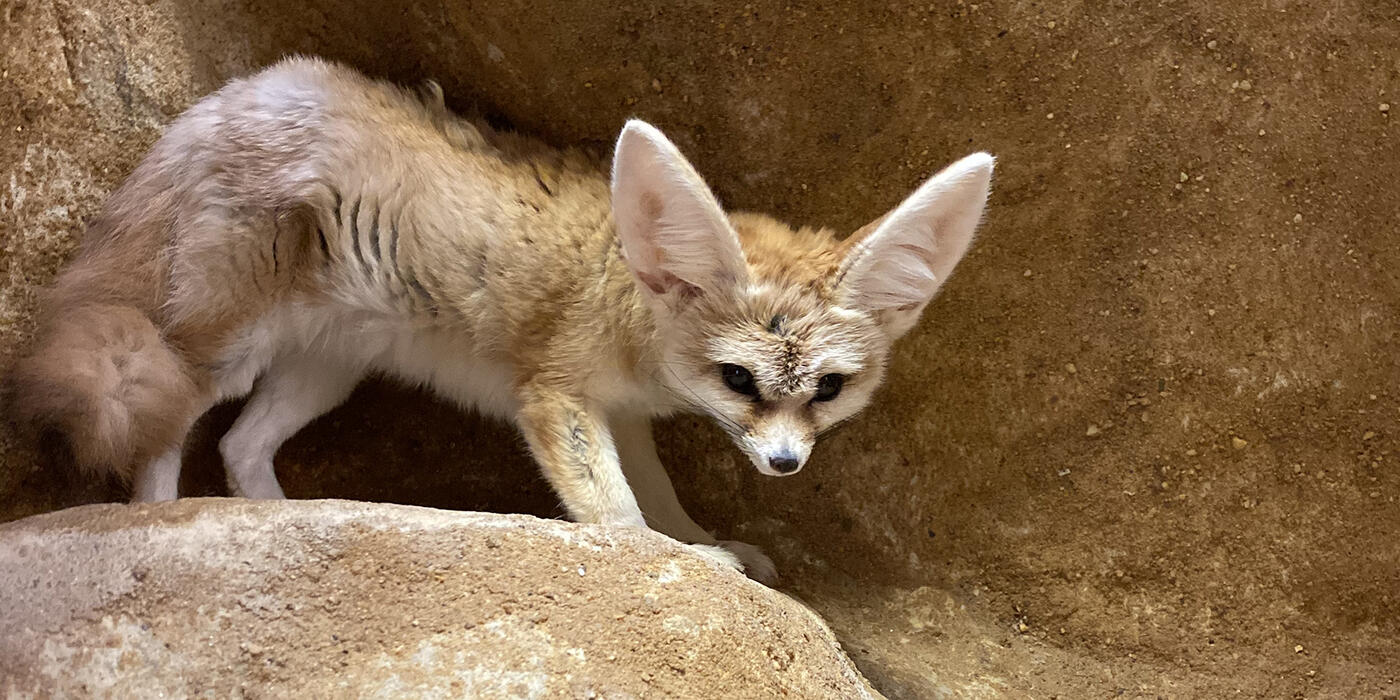Why are Sloths So Slow? And Other Sloth Facts
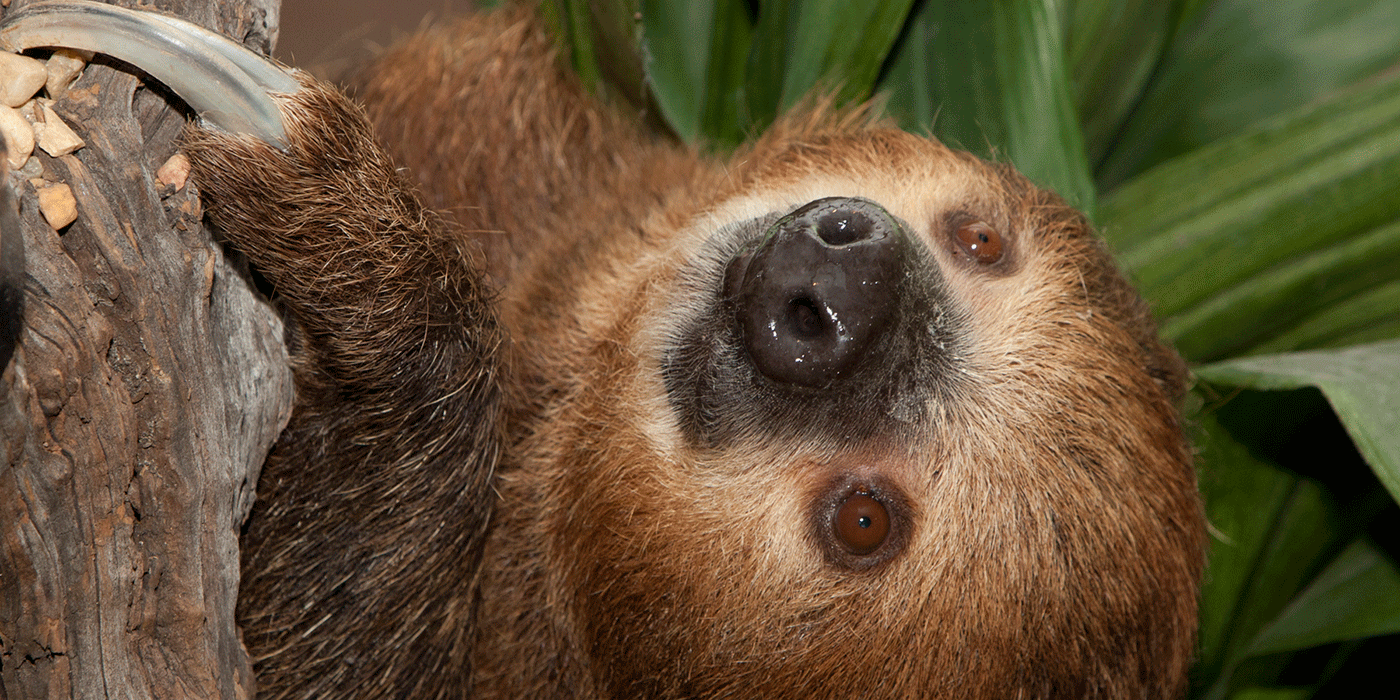
Oct. 20 is International Sloth Day. Impress your friends (and ace your next Buzzfeed quiz) with these fun facts about sloths.
What is a sloth?
Sloths are the stars of memes and viral videos. They make us laugh, and they make celebrities cry. But these social media darlings have been around far longer than the internet. Millions of years ago, giant ground sloths the size of elephants roamed the planet. Some were nearly 20 feet long from snout to tail, with massive claws for pulling tree branches down to eat.
Today’s sloths are a little less intimidating. They max out at about 2.5 feet and weigh between 9 and 17 pounds (about the size of a small dog). They have coarse, brown fur, long limbs and curved claws for hanging tightly onto tree branches — the adaptation to upside-down tree living. And they’re one of the slowest-moving animals on earth!
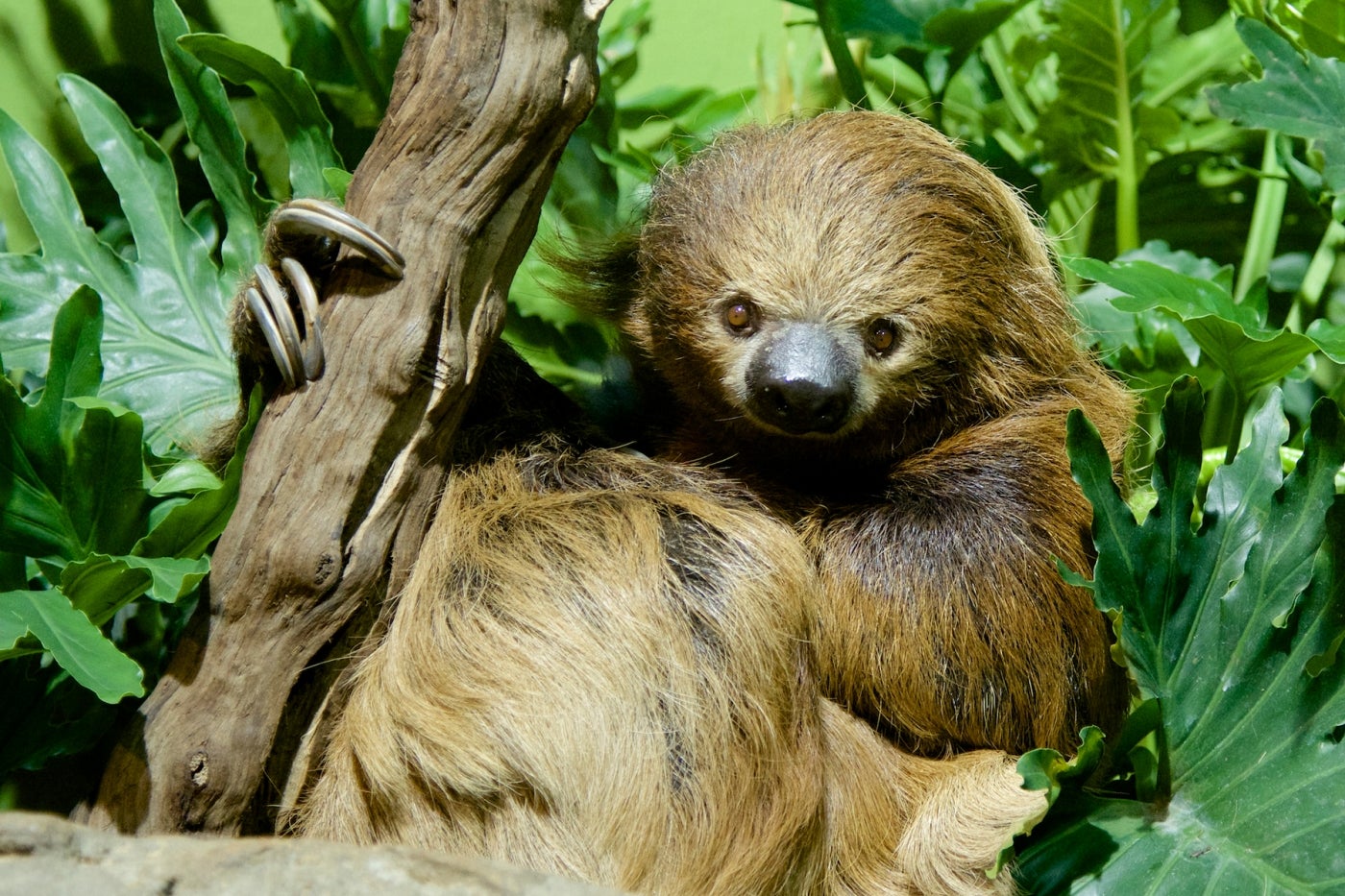
There are two living families of sloths: two-toed sloths and three-toed sloths. Truth be told, all sloths have three toes on their back feet. But two-toed sloths only have two toes on their front feet, whereas three-toed sloths (you guessed it) have three. Two-toed sloths are also slightly bigger than their three-toed pals.
So, are sloths marsupials or primates?
Trick question. Sloths are mammals, but they aren’t primates or marsupials – though the groups do share some similarities. Koalas, for example, are marsupials that live in trees, eat leaves and have slow metabolisms. But sloths and koalas developed these traits independently of each other. The two aren’t closely related. Sloths actually belong to the superorder Xenarthra and the order Pilosa, with a family tree that includes anteaters and armadillos.
Where do sloths live?
Sloths are found throughout Central America and northern South America, including parts of Brazil and Peru. They live high in the trees of tropical rainforests, where they spend most of their time curled up or hanging upside down from branches. Sloths will sleep, eat, mate and even give birth upside down!
Why are sloths so slow?
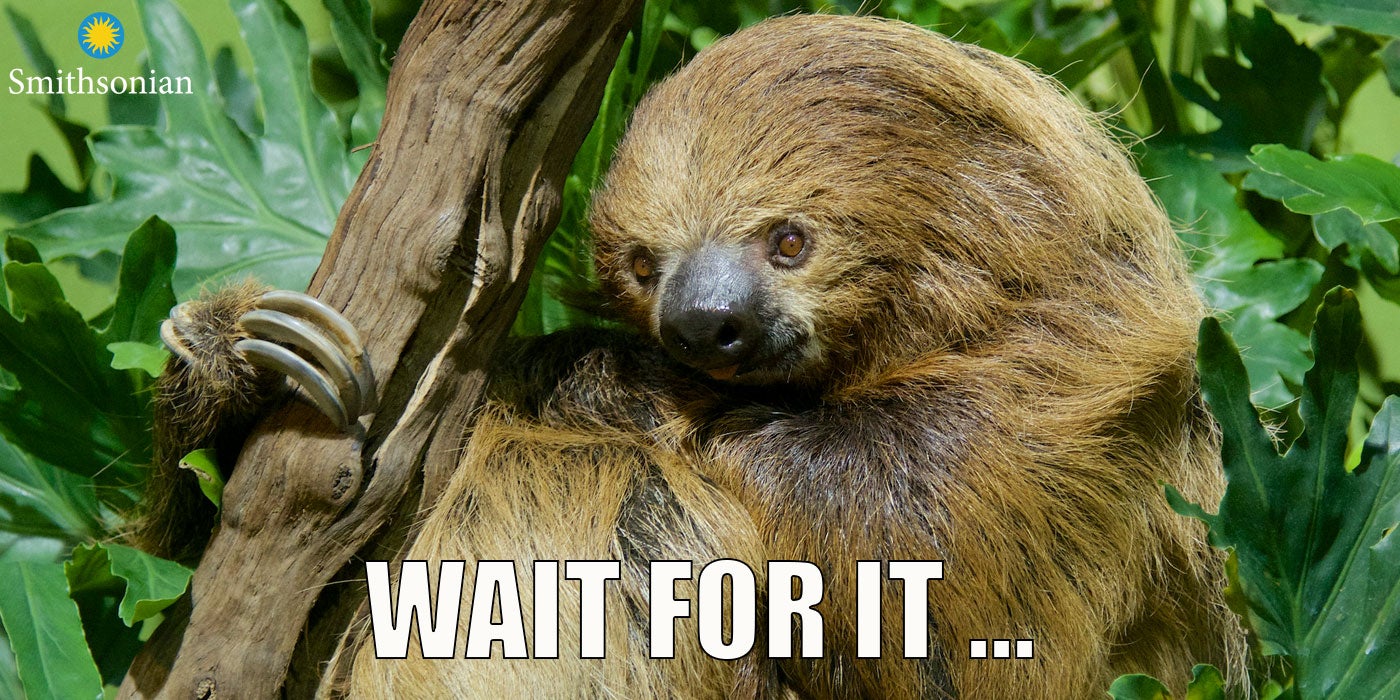
Sloths have leafy, low-calorie diets and very slow metabolisms to match. Their metabolic rate is only about 40-45% of what would be typical for their body weight.
Because of this specialized metabolism, sloths need to be frugal with their energy use. So, they move slowly and tend not to wander far from their small home ranges.
Can sloths swim?
Believe it or not, sloths are strong swimmers. Despite their clunky movement on the ground, sloths are nimble in the water where they use a sort of doggy paddle to move around.
Are sloths endangered?
The smallest sloth, called the pygmy three-toed sloth, is found only on a small island off the coast of Panama where it is critically endangered. Some species, like the maned three-toed sloth are considered vulnerable. Others, like the southern two-toed sloth (also called the Linne’s or Linnaeus’ two-toed sloth) are designated as least concern by the International Union for Conservation of Nature.
Are they dangerous?
You tell us:
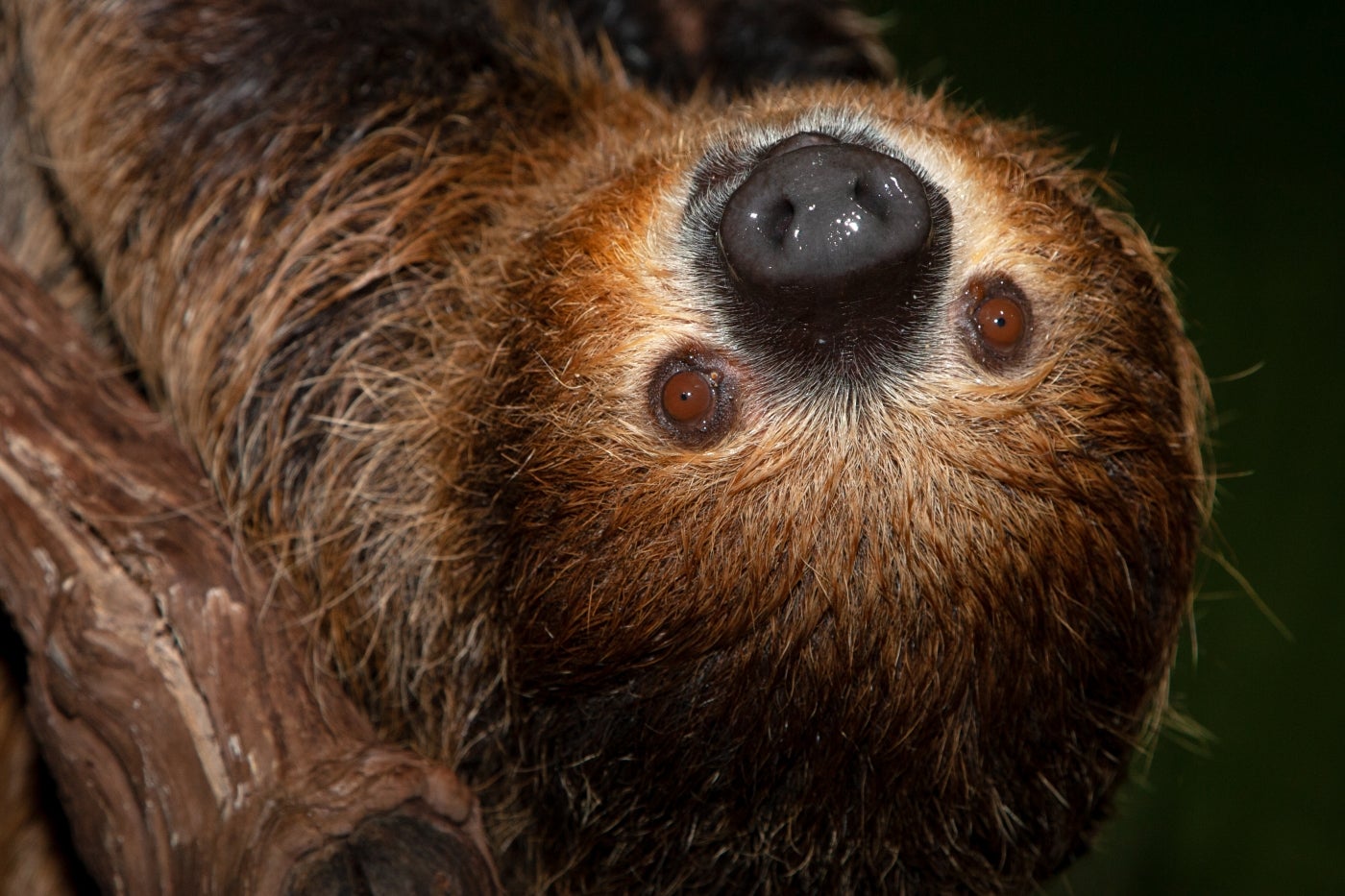
In all seriousness, you’re unlikely to cross paths with a sloth in the wild (they rarely leave their treetop hideouts). But if you do, like any wild animal, it’s best to keep your distance.
Sloths typically rely on their camouflage to protect themselves from predators. However, when threatened, they can use their 3- to 4-inch-long claws and teeth to defend themselves. And despite their slow movements, sloths are surprisingly strong.
And there are other reasons not to snuggle up to a sloth. Each strand of a sloth’s coarse fur has grooves that run from top to bottom where two types of blue-green algae grow. The green tint of the algae helps sloths blend in to their leafy surroundings, but it also invites ticks, mites, beetles, moths and other creepy crawlies to the party. This little ecosystem created by the algae is so unique that some species, like the sloth moth, live exclusively on sloth fur!
So, do sloths have predators?
Jaguars and eagles are common predators of sloths.
Do sloths have tails?
They’re not much to look at, but three-toed sloths do have short, stubby tails.
What do sloths eat?
Sloths eat leaves, fruit and some select fresh green shoots (they’re not keen on crunchy twigs). Though mostly herbivorous, they may occasionally snack on a larval insect or other passive, protein-packed snack (like a bird egg). They lap dew drops off of leaves and fruits, and get additional water from their food.
Related Species:

